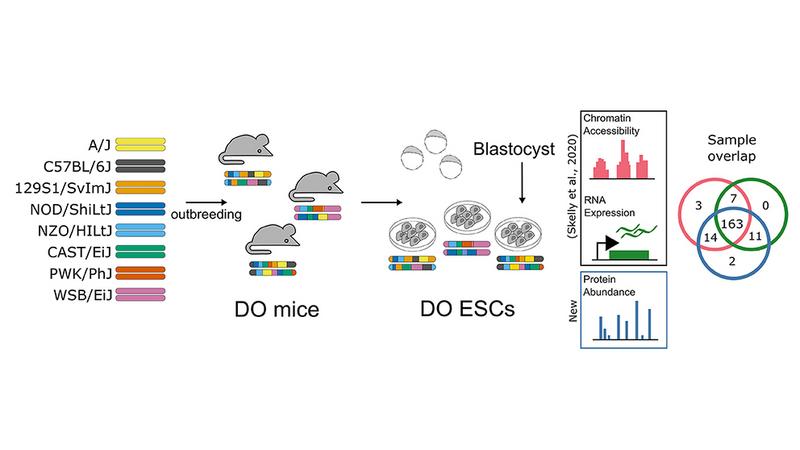Variability in the earliest stages of development
Research Highlight | May 8, 2023
Mammalian life begins with a single fertilized egg that divides, producing two cells, then four, then eight, and so on. After multiple divisions, the resulting cells are called pluripotent, able to divide and differentiate into all the cells and tissue types comprising a mature organism. One would think that such a crucial state would be highly conserved — remain the same —between species. Surprisingly, recent research at JAX has shown that even within the same species, the mouse, important differences exist between the transcriptomes (all the messenger RNAs found in the cells) of different strains with different genetic backgrounds. However, transcriptomes provide only part of the picture of how gene expression leads to protein production and function, so a JAX team took the work a step farther to look at the cells’ proteomes, the complete collection of proteins in a cell. They published their work, “Genetic dissection of the pluripotent proteome through multi-omics data integration,” inCell Genomics.
Led by Associate Professor Steven Munger, Ph.D., Professor Gary Churchill, Ph.D., Associate Professor Christopher Baker, Ph.D., and Associate Professor Laura Reinholdt, Ph.D., the team investigated the proteomes found in pluripotent stem cells from across 190 genetically diverse cell lines. They found that the proteomes were highly variable across the cell lines, and identified pluripotency-associated pathways that were differentially activated in the proteomics data that were not apparent in the transcriptome data. The results reveal post-transcriptional mechanisms and genetic interactions that underlie proteome variability between pluripotent stem cell lines. How the variability affects the cells’ ability to differentiate into different cell types remains to be explored.
Learn more about how different genetic backgrounds lead to variable pluripotency traits.
See how JAX researchers are identifying the crucial differences betweentotipotent (two-cell stage) and pluripotent stem cells in early development.




